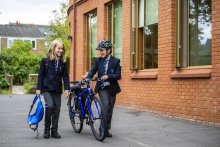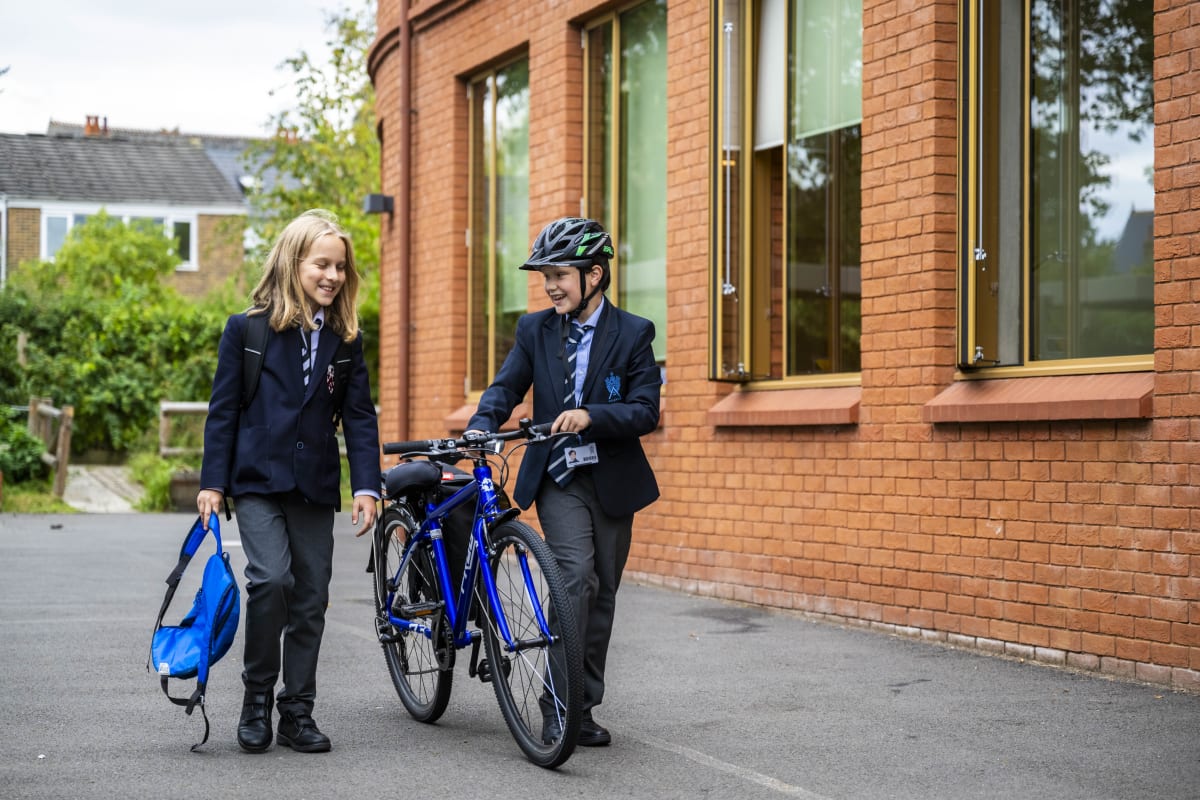






Active travel for getting to school
With the academic year settling into its rhythms and routines, now can be a good time to reconsider children's travel to school and, in particular, the promotion of active travel.
It can be helpful to reflect upon the benefits of active travel with our children. Walking, cycling and scooting promote a sustainable environmental agenda, bringing benefit to the wider community through the reduction of air pollution and traffic congestion. Undoubtedly, children and accompanying carers benefit from the physical exercise while the opportunity to chat and reflect support mental well-being. Head of Alleyn's Junior School, Simon Severino has some handy tips for getting on board with active travel to school.
Find a good map. Southwark Council have provided walking maps to many of our local primary schools putting the school at the centre and approximate walking times around. Those schools usually display them prominently near their entrances. The Dulwich and Herne Hill Safe Routes to School organisation provides a useful map showing quieter routes in the local area. Have a look at the Transport for London (tfl) website which shows cycle routes. In particular, it's worth finding a route that encompasses safe road crossing points such as zebra crossings, traffic lights and school crossing patrols.
Encourage vigilance. Many schools now have school streets operating at peak drop-off and pick-up times. While they are great at encouraging active travel and provide safer starts and ends to duties it is worth noting that many are now camera operated and so vehicles can access by mistake and be a danger; so encourage continued vigilance.
Growing independence. As children become older they will probably want to travel independently. This is a decision that should be individual to every child and their levels of confidence and maturity. If you are heading down this path, then a transition period of accompanying all and then some of the way is often helpful. If possible, see if your child can travel with another child to provide company, motivation and safety. It is critical to have an agreed and familiar route.
Get tech savvy. A basic mobile phone can provide a layer of security for parents and children if they travel independently but do familiarise yourself with the school's mobile phone policy and talk to your child about its safe use. Unfortunately, most phone crime seems to involve other children. Talk to your child about personal safety, how to keep themselves safe and the importance of reporting anything immediately to you and then always let the school and the local police know.
Invest in the gear. Whether accompanying your child or not, you may need to invest in a cycle or scooter helmet, bike lights, reflective clothing and a padlock. If children are cycling, then it might be worth them attending a cycling course. Southwark Council run many in various school and park locations. Most schools will provide some sort of highway code training and this is worth reinforcing at home through modelling of correct behaviour from parents, notably at junctions when cycling and crossing roads.
And finally many schools will promote national and local initiatives such as Walk to School Week or Cycle to School Week and these events can provide the nudge to change routines and refresh thinking.
Extra helpful resources:
https://tfl.gov.uk/modes/cycling/routes-and-maps
http://dulwichsaferoutes.blogspot.com/p/blog-page.html
https://www.southwark.gov.uk/transport-and-roads/sustainable-travel/training/free-cycling-lessons
